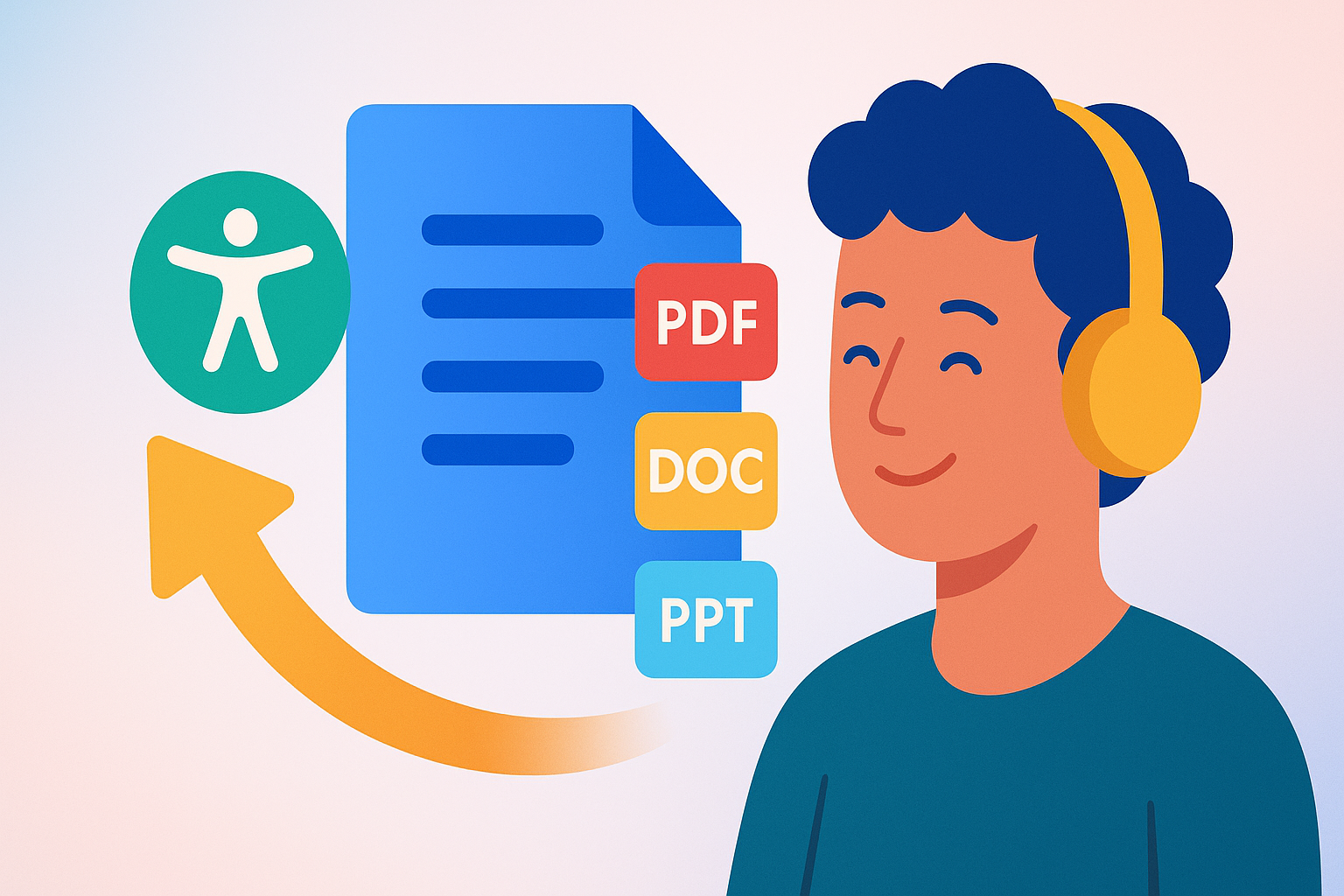


Accessible documents, also known as usable or inclusive materials, refer to digital files like PDFs, Word documents, and PowerPoint presentations designed to be easily read and navigated by everyone, including people with disabilities. These documents incorporate features such as clear headings, alt text for images, proper color contrast, and keyboard navigation support. Making materials accessible promotes equal access to information for individuals with visual, cognitive, or motor challenges. By adopting accessible document standards, organizations improve communication, comply with legal requirements, and foster an inclusive environment. This accommodation supports a wide range of users, including those who use screen readers or assistive technologies, helping remove barriers to learning and workplace participation.
Start by using built-in accessibility checkers in software like Microsoft Office or Adobe Acrobat to identify issues. Add descriptive alt text to images and use proper heading styles to organize content logically. Maintain consistent fonts and colors with high contrast for readability. Test documents with screen readers or other assistive tools to confirm usability. Regularly update materials to reflect any changes and keep accessibility features intact. Providing accessible formats alongside standard files supports diverse user needs.
Disclo streamlines requests, documentation, and tracking for Accessible Documents (PDF, DOC, PPT) or Materials, so HR teams and employees spend less time on paperwork and more time working productively.
